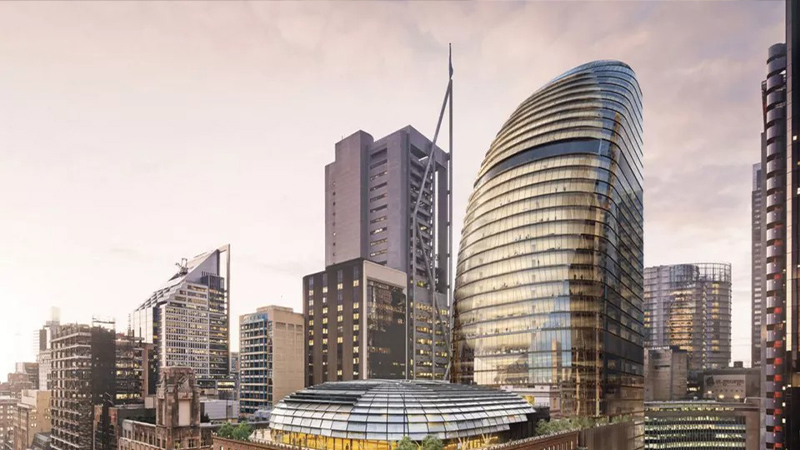Office Markets Under Pressure as Rent Outlook Sours
As Covid-19 dislodges workers from central business districts, office market rents could fall by as much as 25 per cent in the medium-term.
An above-average volume of office stock set to come online in Sydney and Melbourne may see vacancy rates blow out to 11 per cent, according to new analysis on the listed property sector from Macquarie.
The first major commercial Covid-19 casualty, Macquarie’s 39 Martin Place, fell over with ISPT in late April while a mix of listings including JP Morgan’s 28 Freshwater Place and AEW’s 50 Pitt Street have been withdrawn from the market.
A general misalignment on prices post-Covid has caused the suspension of campaigns, sources said, “vendors think it’s worth what it was pre-covid and purchasers want a discount”.
The Macquarie note, which reviews previous economic downturns set against the coronavirus outlook, predicts that valuations will fall by 5 per cent to 15 per cent in the Sydney office market—a softer decline than expected in rents.
“We expect a decline in asset values of 10-15 per cent. Consistent with every downturn, the reduction in valuations is more limited than the decline in rents,” analysts Stuart McLean, Darren Leung and Caleb Wheatley said.
The Reserve Bank has also sounded concern about the health of the commercial property sector as significant disruption to trading conditions hit rental income.
Related: Damage to A-REITs Could ‘Run Deep’

The bank said that office market demand is unlikely to keep pace with the supply due to be delivered into the Sydney and Melbourne CBD markets.
Melbourne is set to welcome its largest annual increase in office stock in three decades this year, while Sydney has about 5 per cent coming online over the next three years.
Macquarie’s analysts said Sydney’s reasonably tight office markets—vacancy currently sits at sub-5 per cent—could see the vacancy rate hit 9 per cent by the end of the year and blow out to 11 per cent by 2023.
“This will be dependent on net absorption as we come out of Covid-19,” the analysts said.
“In prior downturns a 1 per cent change in vacancy resulted in a 6 per cent change in rents. As a result, we expect net effective rents to fall about 15 per cent to 25 per cent, led by rising incentives.”
The analysts point out that historically, net absorption has declined by at least 3 per cent of stock.
Related: Deteriorating Conditions Hit Commercial Markets

The medium to long-term landscape for office markets, however, remains up for debate. Westpac’s chief executive Peter King said that the large-scale move to flexible working conditions has been a “healthy change”.
“Whether we go back to the size of workforce in the CBD is an open question.”
Morgan Stanley head James Gorman said that he expects his 80,000-strong workforce to take up “much less real estate” post-Covid-19.
“We’ve proven we can operate with no footprint,” Gorman told Bloomberg Television.
Macquarie expects global GDP to return to pre-Covid levels faster than the financial crisis—predicting growth to bounce back within 15 months.
“When compared to other cycles, a positive is the extent of monetary policy support which should be a partial offset for office markets.”















